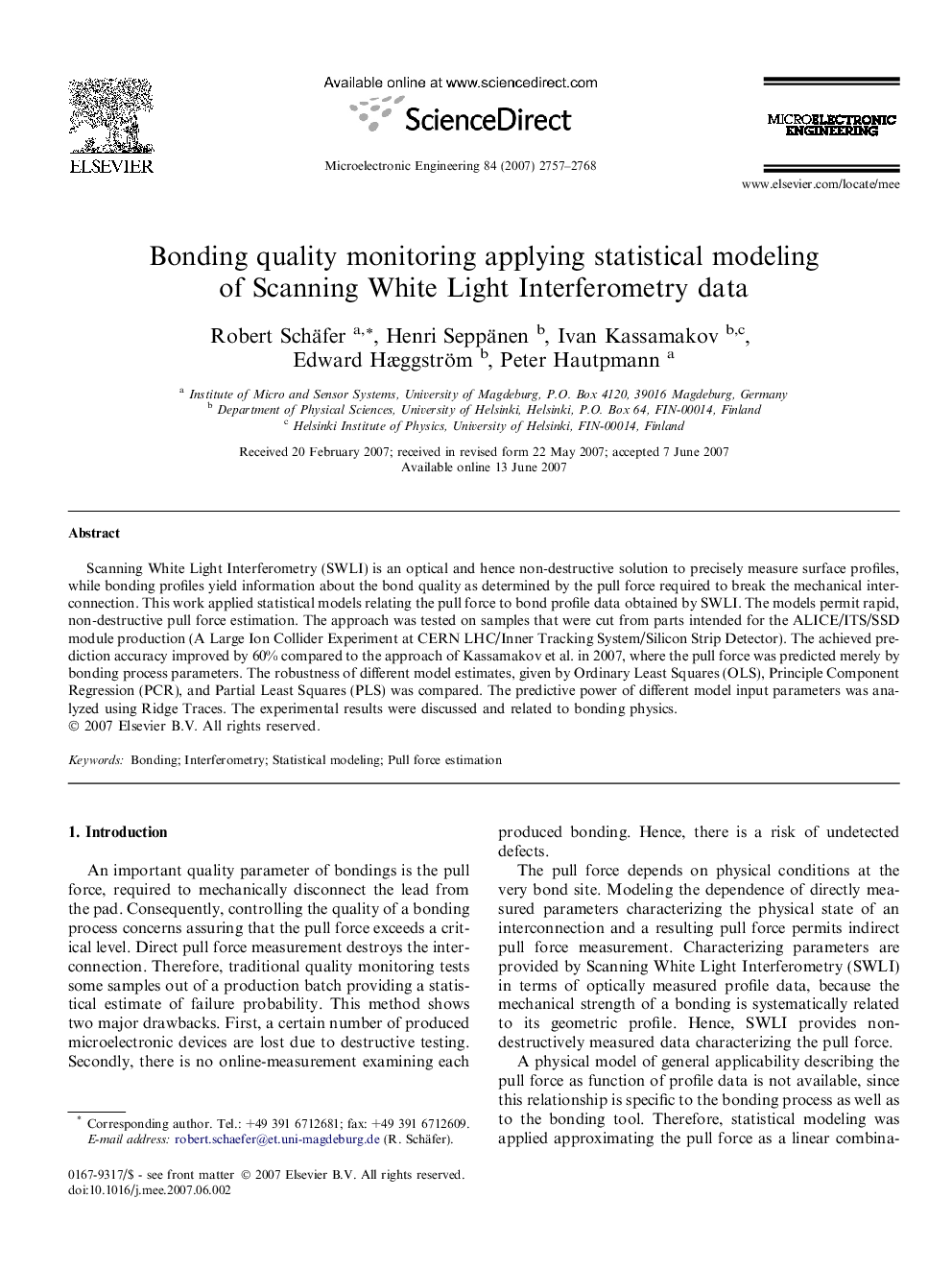| Article ID | Journal | Published Year | Pages | File Type |
|---|---|---|---|---|
| 540820 | Microelectronic Engineering | 2007 | 12 Pages |
Scanning White Light Interferometry (SWLI) is an optical and hence non-destructive solution to precisely measure surface profiles, while bonding profiles yield information about the bond quality as determined by the pull force required to break the mechanical interconnection. This work applied statistical models relating the pull force to bond profile data obtained by SWLI. The models permit rapid, non-destructive pull force estimation. The approach was tested on samples that were cut from parts intended for the ALICE/ITS/SSD module production (A Large Ion Collider Experiment at CERN LHC/Inner Tracking System/Silicon Strip Detector). The achieved prediction accuracy improved by 60% compared to the approach of Kassamakov et al. in 2007, where the pull force was predicted merely by bonding process parameters. The robustness of different model estimates, given by Ordinary Least Squares (OLS), Principle Component Regression (PCR), and Partial Least Squares (PLS) was compared. The predictive power of different model input parameters was analyzed using Ridge Traces. The experimental results were discussed and related to bonding physics.
